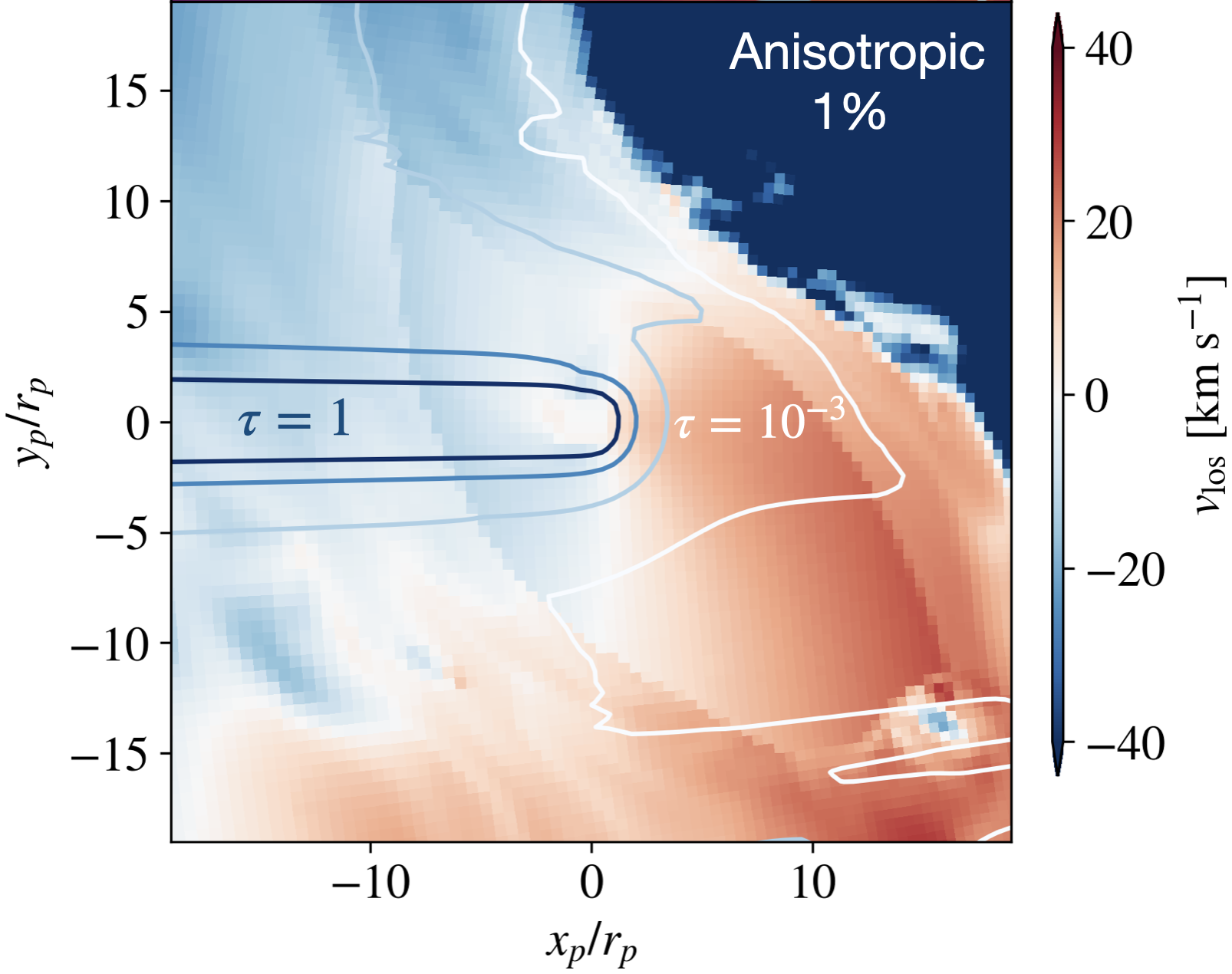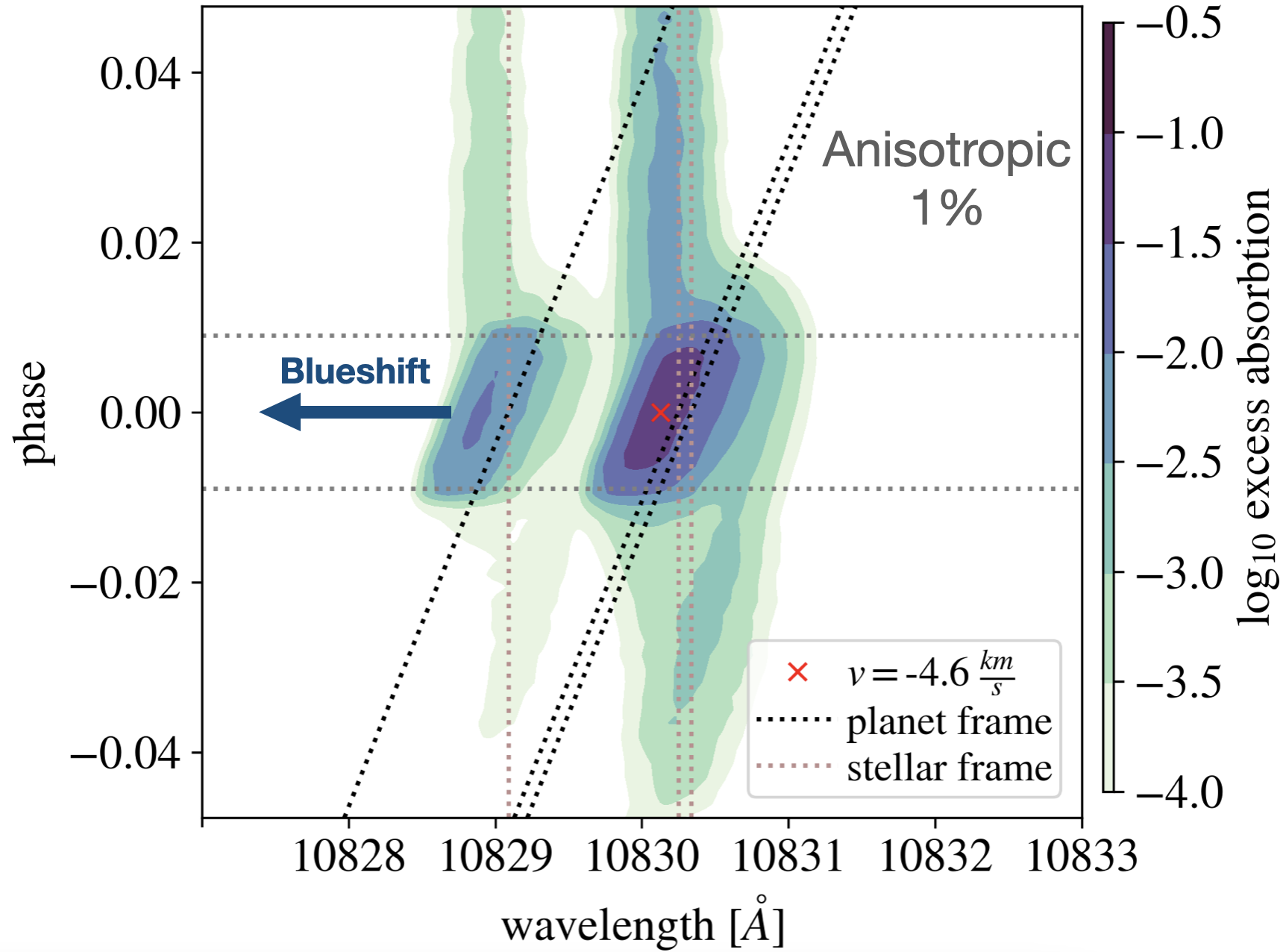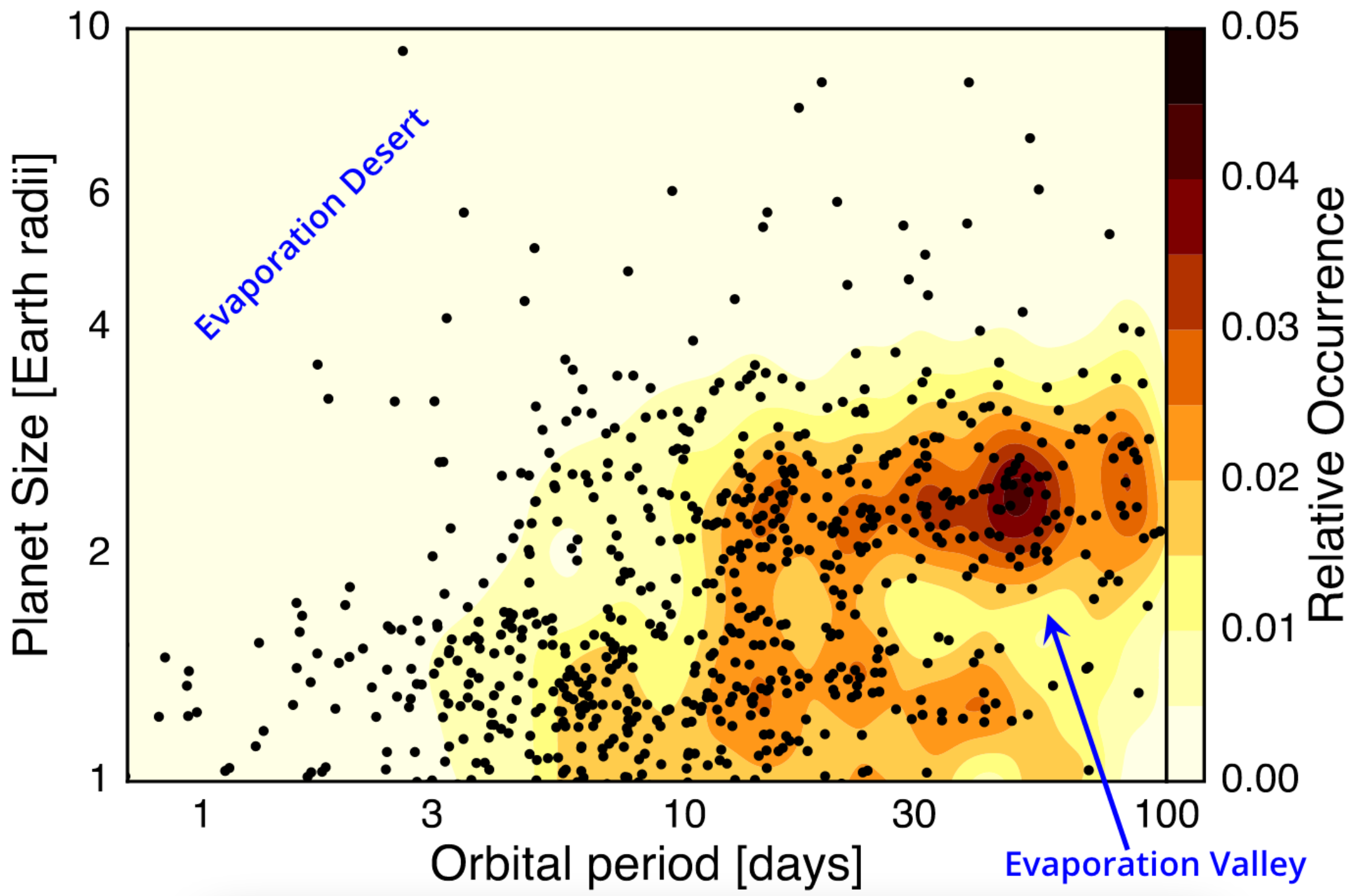Based on our simulations, we found a relation between the mid-transit velocity shift of the helium line at 1083 nm and the degree of day-to-night side anisotropy.
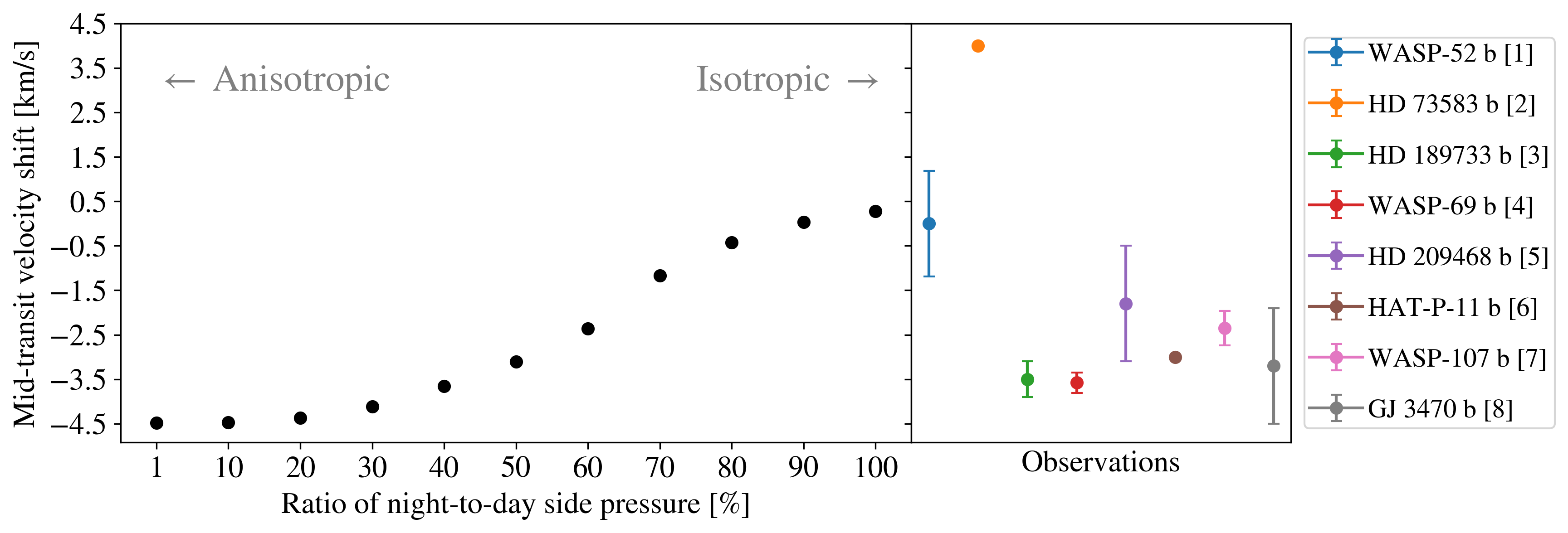
Fig. 1 - Mid-transit velocity shift of helium-line centroid as a function of night-to-day side anisotropy (left). The results are based on 3D hydrodynamic simulations. The points toward the left side correspond to models in which the pressure on the night side is a smaller fraction of the dayside pressure, corresponding to a larger day-night anisotropy. Velocity shifts measured for planets with helium detections are marked in the right panel. (No uncertainties were provided for HD 73583 b and HAT-P-11 b.)
This result suggests that measuring the precise wavelength shifts can be used to constrain the day-to-night side pressure and temperature contrast, and thus probe the efficiency of atmospheric circulation and heat transport in the upper atmosphere.
References:
[1] Kirk et al. 2022, arXiv:2205.11579; [2] Zhang et al. 2022a, AJ, 163, 67; [3] Salz et al. 2018, A&A, 620, A97; [4] Nortmann et al. 2018, Science, 362, 1388; [5] Alonso-Floriano et al. 2019, A&A 629, A110; [6] Allart et al. 2018, Science, 362, 1384; [7] Kirk et al. 2020, AJ, 159, 115; [8] Palle et al. 2020, A&A, 638, A61; [9] Owen 2019, Annu. Rev. Earth Planet. Sci., 47, 67; [10] Szabó & Kiss 2011, ApJL, 727, L44; [11] Owen & Wu 2013, ApJ, 775, 105; [12] Fulton et al. 2017, AJ, 154, 109; [13] Vidal-Madjar et al. 2003, Nature, 422, 143; [14] Lecavelier Des Etangs et al. 2010, A&A, 514, A72; [15] Ehrenreich et al. 2015, Nature, 522, 459; [16] Oklopčić & Hirata 2018, ApJ, 855, L11; [17] MacLeod & Oklopčić 2022, ApJ, 926, 226.


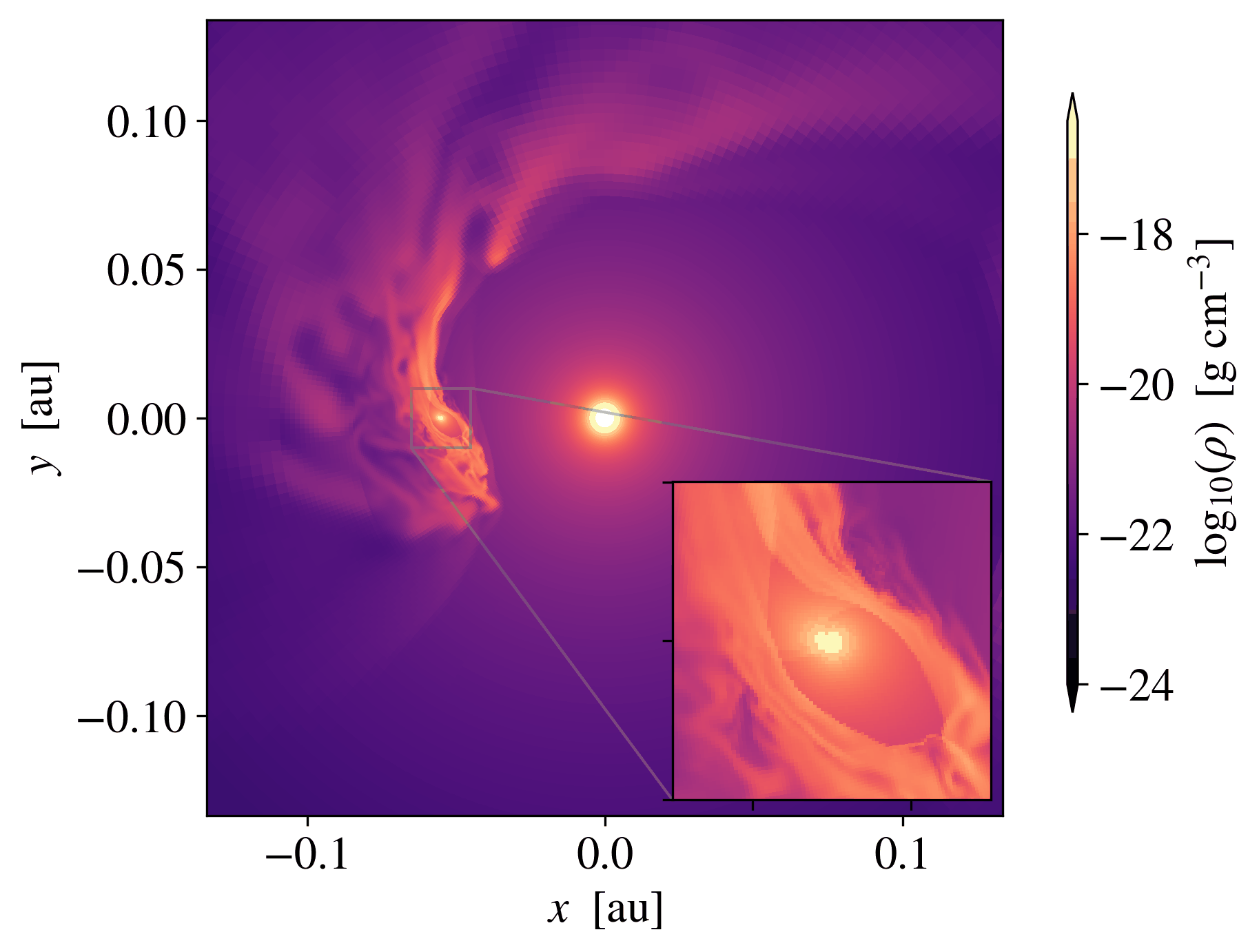


.png)
